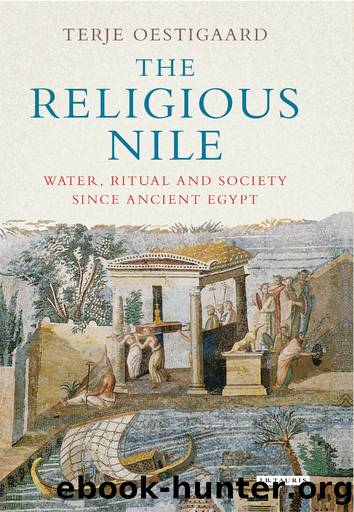The Religious Nile by Oestigaard Terje;

Author:Oestigaard, Terje;
Language: eng
Format: epub
Publisher: Bloomsbury UK
Published: 2018-06-15T00:00:00+00:00
31. Nuer dug-out canoes.
As the rains advance, grazing becomes more difficult, the ground being flooded and the vegetation rank, and in years of high water may be a serious problem. The cattle have to rely on the short grasses that prevail on village ridges: a further reason that compels Nuer to occupy these sites in rain.140
Rainmaking and rain-stopping rituals were hence of fundamental importance, since ‘variation of water supplies and vegetation thus forces Nuer to move and determines the direction of their movements’.141
‘WILLING THE SUN’ OR MASTER OF DISASTER
In order to understand the particular and peculiar character of a river ideology and religion, which will be discussed in the next chapter, one may compare and contrast these practices and beliefs with rainmaking traditions. At a structural level these two belief systems and traditions share some fundamental ideas, namely that the king is responsible for the wealth and health of his people. However, a river religion may create a more stable ideology and a more powerful civilization than kingdoms ruled by rainmakers, which is particularly evident among the Nilotic kingdoms along the Nile. The unpredictability of the rain itself with often extreme variability and fluctuation gives non-reductionist premises, both possibilities and limitations, for organizing and controlling societies. It is not necessary to go to an extreme Marxist view where the control of the means of production is the essence, since controlling the means of production, including the labour, does not help much if there is nothing to produce because the rains have failed; no hoes, ox-ploughs or mills can mitigate a severe drought and harvest failure.
On the other hand, a society organized around controlling the rain may strengthen its ideology and beliefs even when the rains fail. Failure may indeed reinforce the beliefs of the system given the high stakes involved, basically since there is ultimately no rainmaking as such, but the benevolent rains are given by the ancestors, spirits or divinities mediated and enabled by a chief or a rainmaker. If the rain fails, it is not because there is something wrong with the system, in practice people’s own ancestors and gods, but that there is something wrong with the leaders or the ritual specialists as mediators – or the community at large. Henceforth, the obvious solution has historically been to replace the ruler with another one better suited for the tasks. In African religions as elsewhere, blaming the gods or even worse, challenging their authority and accusing them of causing human misery unless it is due to divine repercussions for sinful behaviour, is simply an impossibility for believers adhering to these very cosmic principles. The system cannot be wrong since the religious principles are invented by the spirits and divinities themselves, and only fools would traditionally object to their own ancestors. Rulers and unsuccessful rainmakers, on the other hand, are another story, in particular if they were perceived as evil wanting to harm humans and herds, or just simply being incapable of fulfilling their duties.
In traditional African societies rainmaking
Download
This site does not store any files on its server. We only index and link to content provided by other sites. Please contact the content providers to delete copyright contents if any and email us, we'll remove relevant links or contents immediately.
Cecilia; Or, Memoirs of an Heiress — Volume 1 by Fanny Burney(31361)
Cecilia; Or, Memoirs of an Heiress — Volume 3 by Fanny Burney(30958)
Cecilia; Or, Memoirs of an Heiress — Volume 2 by Fanny Burney(30915)
The Great Music City by Andrea Baker(21929)
We're Going to Need More Wine by Gabrielle Union(18096)
Bombshells: Glamour Girls of a Lifetime by Sullivan Steve(13129)
Pimp by Iceberg Slim(12961)
All the Missing Girls by Megan Miranda(12791)
Fifty Shades Freed by E L James(12471)
Talking to Strangers by Malcolm Gladwell(11928)
Norse Mythology by Gaiman Neil(11924)
Crazy Rich Asians by Kevin Kwan(8383)
Mindhunter: Inside the FBI's Elite Serial Crime Unit by John E. Douglas & Mark Olshaker(7863)
The Lost Art of Listening by Michael P. Nichols(6497)
Enlightenment Now: The Case for Reason, Science, Humanism, and Progress by Steven Pinker(6426)
Bad Blood by John Carreyrou(5794)
The Four Agreements by Don Miguel Ruiz(5542)
Weapons of Math Destruction by Cathy O'Neil(5064)
We Need to Talk by Celeste Headlee(4893)
